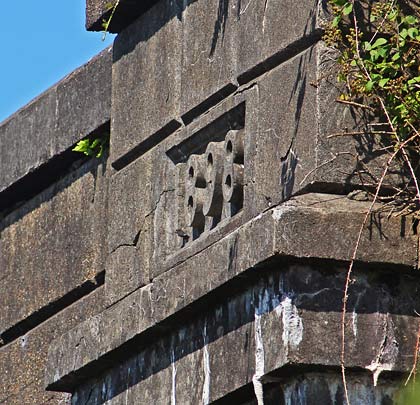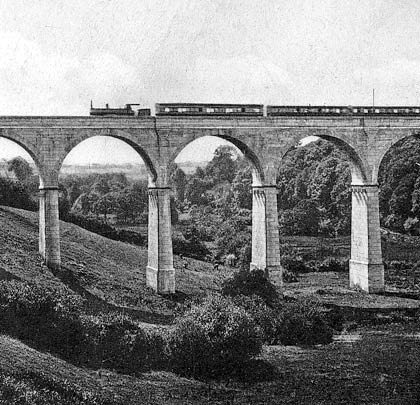Derriton Viaduct
Derriton Viaduct
























With the opening of Bude Station on 10th August 1898, the London & South Western Railway completed its 28-mile branch from Okehampton which had taken 19 years and four Acts of Parliament to fulfil. The line was originally built as far as Holsworthy, seeing its first trains in January 1879. But when the company showed no sign of extending the route westwards towards the coast, the residents of Stratton and Bude raised £1,000 towards the cost of promoting a bill for a 9½-mile extension that would visit the two towns.
The L&SWR took up the offer and the Holsworthy & Bude Railway Act passed in August 1883. However, apart from a ceremonial sod cutting, no works were undertaken and the L&SWR soon sought the scheme’s abandonment, authority for which was granted in May 1892. Thereafter, the company was again lobbied to advance its line, resulting in another Bill being passed on 6th July 1895. This though involved a substantially cheaper route, bypassing Stratton altogether.
Responsible for its development was William Galbraith who had been appointed the L&SWR’s resident engineer on the death of John Errington in 1862. Contracted to deliver the works was John Aird & Co. Two viaducts – both now Grade II* listed – formed parts of the scheme, one near Helscott and the other quarter of a mile west of Holsworthy’s station. Their construction was influenced by a local dearth of stone suitable for heavy works, driving the choice of concrete. However sand had to be brought all the way from Plymouth and Bideford.
The viaduct at Holsworthy went by the name Derriton – a village just to its south. Featuring nine arches each with a 50-foot span, it carried the single track at a maximum height of 92 feet. The piers were tapered – 1:24 at their ends and 1:48 on their faces – and 6 feet thick at springing level. The structure was built from concrete blocks – possibly the first to benefit from such an approach – except for the plinths below the four central piers and first 15 feet of the spandrels. To facilitate their assembly, staging was erected about 40 feet above the valley floor from which two Scotch cranes operated.
No allowance was made for thermal expansion as none was anticipated. This faith was borne out as neither cracking nor settlement of the arches occurred throughout the work. And the use of blocks also brought a cost advantage: they could be set by foremen, with the aid of just one or two masons. In the arch, the blocks comprised 5-to-1 concrete – costing 35 shillings per cubic yard – with 6-to-1 concrete used in the piers.
Granite projections are still apparent at springing level, used to support the arches’ timber centring. Four corbelled panels on each elevation form the backs of refuges; the easternmost panels bearing the opening date of 1898. Despite the use of concrete, the overall look of the structure – which cost £10,250 – simulates traditional masonry in a very convincing manner.
The line over the viaduct closed on 3rd October 1966. Since 2005, the structure has hosted the Ruby Way cycle path, connecting Holsworthy with Bude via the old trackbed. Access onto the deck is provided by the ‘Cornish Corkscrew’, an elaborate spiralling ramp which passes beneath one of the arches.







